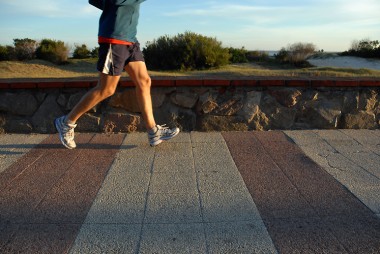The Anatomy of the Wrist
The wrist is a complex joint with two intricate rows of bones at the base of the hand. There are a total of eight small wrist (carpal) bones and five longer metacarpal bones, which support the fingers and thumb bones (phalanges). The ulna and the radius are the two long bones that form the forearm and these attach to the first row of the carpals. Each bone end is covered with cartilage, an elastic tissue that creates a cushioned smooth surface that allow the bones to glide smoothly against each other.
Wrist and Hand Arthritis
Arthritis comes in many forms, but the three main forms that affect the hand and wrist are osteoarthritis (OA) and rheumatoid arthritis (RA), and post-traumatic arthritis. Arthritis simply means joint inflammation, and usually causes pain, stiffness, and swelling of a particular joint, depending on the cause. Osteoarthritis is a progressive form of arthritis that destroys the smooth articular cartilage covering the ends of the bones and is generally known as “wear and tear” arthritis.
The cartilage wears away in this form of arthritis resulting in the well-known “bone on bone” pain of osteoarthritis. Rheumatoid arthritis is a chronic autoimmune disorder that affects multiple joints throughout the body. With RA, the arthritis is not limited to a particular joint of the hand or wrist, also involving inflammation of the tendons and ligaments, meaning these structures soften and erode which can lead to tearing of the tendons that are necessary to straighten the fingers. This results in a deformed joint with gnarled fingers and bent wrists.
Treatment for Wrist and Hand Arthritis
There are many treatments for wrist joint arthritis, depending on the location and severity of the condition. Wrist bracing, activity modifications and over the counter pain medication such as ibuprofen and Tylenol are the first line of treatment. With wrist arthritis, there is often diagnostic and treatment value to an intra-articular steroid injection as many patients find months to years of relief with such treatments.
When symptoms persist despite these treatments, surgical management can be quite successful. The procedures for wrist arthritis include arthritis bone excision called a proximal row carpectomy, which requires no hardware. Other patients benefit from partial wrist fusions depending on the location and cause of the arthritis. Still other patients eventually need a wrist fusion that limits the painful wrist flexion and extension that typically accompanies advanced wrist arthritis.
A newer type of treatment that I offer in select situations is a wrist replacement, known as wrist arthroplasty. The typical candidate for a wrist joint replacement is someone who has severe arthritis but doesn’t rely on the wrist for heavy daily use. I primarily perform this procedure to relieve pain and to maintain function of the hand and wrist.
Wrist replacement surgery will help recover and retain wrist movements and also will improve the ability to perform activities of daily living. During this procedure, the worn-out ends of the bones are removed and replaced with an artificial joint, which allows for smooth painless motion. This will help reduce or eliminate pain and improve grip strength. It is important to note that if the bones are fused together, the wrist will not be able to bend.
Wrist Joint Replacement Surgery
This procedure is done usually on an outpatient basis, but some patients require on overnight stay. An incision is made on the back of the wrist and the damaged ends of the arm bones are removed. Sometimes the first row of carpal bones must be removed also. Then, the prosthesis is inserted into the center joint region and held in place with a combination of screws and press fit that allows for bony in-growth.
After the surgery, a cast will be worn for several weeks. Once this is removed, a protective splint may be necessary for up to two months. I will prescribe pain relief medications and an exercise program to restore movement gradually by increasing power and endurance. Wrist arthroplasty often improves motion to around fifty to sixty percent of normal motion.

 Many athletes develop shin splints, a condition called tibial stress syndrome by doctors. Whether you are running a marathon or just sprinting to catch the bus, you feel a throbbing or aching in your shins and that’s shin splints.
Many athletes develop shin splints, a condition called tibial stress syndrome by doctors. Whether you are running a marathon or just sprinting to catch the bus, you feel a throbbing or aching in your shins and that’s shin splints.